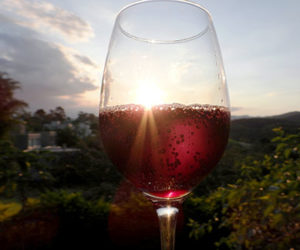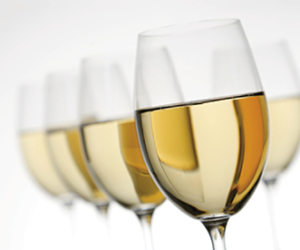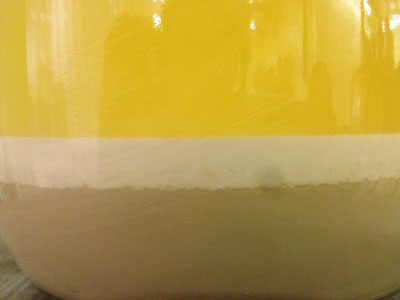
If you happened to be in any of my seminars at the 2018 WineMaker Magazine Conference in San Diego, California, you probably know that I love lees. After fermentation is finished and the wines are barreled down, winemaking is mostly babysitting: Waiting, topping, a little SO2 here, a little tasting there. But lees work allows you to drive stylistic goals along the way and stay actively engaged. I also love the effects of lees in the wines I drink. Muscadets, often aged for a year or two on the lees (a practice known as sur lie aging in French), are probably the most famous example, although lees use is extremely common in Chardonnay and Pinot Noir wine production.
What’s so special about these little guys, who are simply dead yeast? They can add texture and aromas to your wine; they can help protect your wine from oxidation, and even lower the need for cold and protein stabilization — they’re versatile little cells! Let’s go over the lifecycle of lees (birth, death, decomposition, etc.), and discuss some techniques for their uses along the way, both for whites and reds.
Before lees can be called lees, it is a yeast cell, born from another yeast cell (usually by cell division, but occasionally by sexual reproduction between yeast cells). Each yeast cell will be a part of the orchestra of fermentation, transforming your grape juice into wine. It itself will reproduce for a period of time and eventually it will perish. Cause for sadness? I do not think so, as even after its death, a dead yeast cell can continue having an effect on its life’s work (your wine!), breaking down and lending character and stability to your wine. As fermentation slows and eventually stops, the remaining solids in the wine sink to the bottom of the tank, no longer suspended by the yeast’s carbon dioxide production, and this is the moment a yeast becomes a lee.
Lees refers both to the dead yeast cells (fine lees) and anything else solid in your fermentation that sinks to the bottom of the tank (gross or heavy lees): Grape bits, dirt, as well as some fine lees, and so on. In the tank, your gross lees, being heavier, settle first, within 24 hours, the fine lees slowly settling on top over a period of days. With well-settled wine in a carboy, you can see distinct stratified layers, grey, orange or brown gross lees on the bottom, off-white fine lees, and clean wine above. A red wine’s lees will be shades of purple or pink.
POST FERMENTATION
It is after fermentation that you must decide whether or not to keep the lees in your tanks, and, if keeping, whether you want only the fine or both fine and gross lees. One risk with keeping your wine in contact with lees is that, as they absorb oxygen, they can encourage reduction (hydrogen sulfide), which you generally do not want in your wine. This risk can be ameliorated through stirring of the lees though. Including the gross lees puts your wine at a significantly higher risk for reduction than keeping only the fine, and most winemakers who use lees opt to remove the gross lees as soon as possible after fermentation.
To remove all of your lees, once fermentation has stopped, either in the fermentation vessel itself or in the new aging vessel, allow the wine to settle for around a week. The gross and fine lees will settle during this period, then simply rack the wine into another vessel, being careful not to suck up too much of the settled lees at the bottom. Be sure to move the tank containing the lees as little as possible prior to racking, as movement will suspend the lees some.
Before lees can be called lees, it is a yeast cell, born from another yeast cell . . .
To keep only the fine lees, you have a couple of options. To keep only the purest, finest lees, once fermentation has stopped, thoroughly stir the wine in the fermenter to suspend the lees. Allow the wine to settle for 24 hours, during which, the gross lees will sink to the bottom of the tank, but the fine will remain suspended in the wine. Rack the lees-y wine into the new tank, being careful not to disturb or suck up the gross lees.
Another option, if you would like to keep some of the heavier lees, would be to rack a wine towards the end of fermentation into its aging vessel. Fermentation bubbles keep much of the lees suspended but the heaviest particles will remain at the bottom of the tank. You could also stir and wait 24 hours if you would like to maximize your lees yield. In keeping some of the heavy lees, your wine will likely end up having some reduction, which is purely a stylistic choice, although not to everybody’s liking (I’m personally a fan). To play the reduction game safe, aim to have your wine finish fermentation with no reduction (give it some air, perhaps use a “prophylactic dose” of copper sulfate, to quote fellow WineMaker columnist Wes Hagen), and monitor the wine as it ages. If at any point the reduction goes beyond your liking, simply rack off the lees. This should stop further reduction, and the oxygen introduced during racking should lighten what reduction is present.
At this early stage of the winemaking process, post alcoholic fermentation, lees are not giving much in the way of flavor or texture, and their main function is absorbing oxygen. If your wine is undergoing malolactic fermentation, this is beneficial, as malolactic bacteria are most content in an anaerobic (oxygen-free) environment. Weekly bâttonage (lees stirring) to suspend the lees in the wine to scavenge oxygen — if done gently, introducing a minimum of oxygen — can be helpful to maintaining an anaerobic environment. The act of opening the tank and stirring, depending on how careful you are, can introduce more oxygen than the lees will absorb, defeating the purpose. If aging in carboys, you can carefully shake or roll them on their bottom rim to suspend lees.
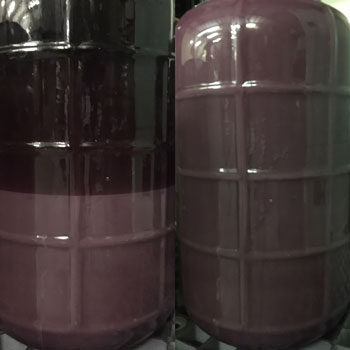
For red wines, in this early stage, before color and tannin have polymerized and become stable, lees can adsorb lots of free-color molecules (this is why red wine lees have their purple tone) and they also release enzymes which can destroy color molecules. Prior to tannin/color polymerization, a smaller pool of free color molecules means less color to bind with tannin, and can result in longer tannin/color polymers. Depending on your structural goals and how abundant your color is, this may or may not be cause for concern. If you would like to maintain the largest pool of color possible, it would be prudent to remove your lees, which can easily and safely be kept until color has stabilized—a process that takes around 6 months.
If you want to play it safe and be sure your color is stable, a simple test I learned from Clark Smith can be used. Little monomeric color is visible at wine pH 3.7 (25% is visible at that level), however by lowering the pH we can see it all. Take two small samples of your wine in clear glasses, add 10% sulfuric acid into one of the samples (i.e., if you have a 50 mL sample, add 5 mL of sulfuric acid). Compare the rim (meniscus) of the two samples for color density—early on, the acidified sample should show more color density. Try this again at 6 months, if most of the color has polymerized, there will be a negligible difference between the two samples. Note: The acidified sample will change hue, getting brighter or pinker, ignore this, as we are only concerned with color density for this test. Also, do not taste the acidified sample, which is hazardously acidic.
To store your lees (and the same holds for white wines), simply rack your wine off of the lees, then rack or scoop the lees into a carboy. As with wine, make sure your carboy is always full, although, as lees absorb oxygen, they are highly resistant to oxidation and stable. However, for the same reason (that they absorb oxygen), it is important to stir the saved lees weekly to prevent compacting, which can lead to hydrogen sulfide production, in which case you would not want to reintroduce them into your wine. Healthy lees smell beautiful—floral, fruity and bready (my 2017 Mourvèdre lees smelled just like mango!) — unhealthy lees smell reduced, stinky, rotten, or even fecal.
EXPLODING YEAST
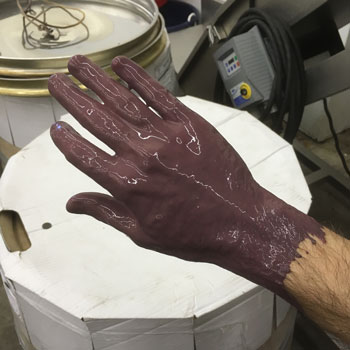
While soon after fermentation the lees mostly serve to protect your wine, rather than actively exerting their own influence on it, little by little this changes, as — my apologies to anybody squeamish out there — their guts slowly leak into your wine. Their membrane leaks more and more until, after around a year, autolysis happens: The membrane tears open, and the remainder of their guts release into your wine. As disgusting as this sounds, it’s a good thing — this is why we keep them! Their “guts” are primarily made up of mannoproteins, which are what give the wine texture, aroma, and aid in stability. Certain thiols, which are organosulfur compounds also associated with aroma additions are released in this process as well. We usually hear talk of lees leading to polysaccharides (a carbohydrate), however it is a polysaccharide attached to a protein.
In white wines, mannoproteins give wines a roundness and fill out the mid-palate; in reds they coat and soften tannins. They can lend a lees-y complexity to the whites (think biscuity — as in lees influenced Champagnes, although less pronounced).
Stability-wise, they retard both the accumulation of protein colloids (protein haze) when a wine is exposed to heat, as well as tartrate crystals during cold. This means that wines aged on the lees will require less bentonite and cold treatment for heat and cold stability (I’m personally of the opinion that the less we can do to a wine — while still ensuring its stability — the better). Of note, they do not remove the need for these procedures, but you will notice less bentonite will be necessary in bench trials and, if pressed for time during cold stabilization, you’ll be a little safer cutting it short!
Lees-aged wines are also associated with having a longer life in bottle, this may be because compounds from the lees can oxidize in place of the wine itself, allowing for a delayed oxidation and degradation of wines in bottle.
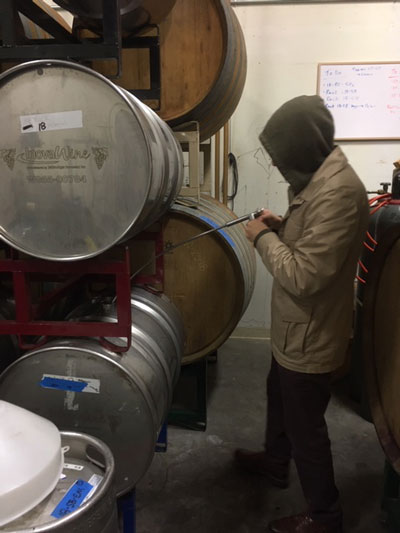
The release of mannoproteins and these benefits can be hastened by more frequent bâttonage and warmer temperatures. Bâttonage every two weeks is a pretty typical regimen, although some winemakers opt for more frequently, and others never stir their lees. Texture seems to come from lees earlier than aroma, so if you seek texture and not aroma, I would stir weekly or twice monthly until malolactic has finished (to help the little bugs out), and then keep stirring to a minimum. If stirring often, be sure to open bungs and stir slowly and gently in order to expose the wine to a minimum of oxygen.
If aging a wine on the lees for a period of a few years, you may find that the wine eventually absorbs all of them. If bottling long before this happens — and I assume this is 99.9% of us! — I suggest racking off of them prior to bentonite fining and cold stabilizing (which I do at the same time to avoid excessive racking). As mentioned earlier, lees can be safely stored, and you can use last year’s lees in the following year’s wine, which will give you a jump start on their influence. This is particularly useful if you do not plan to age your wine long and would like more lees influence than the current vintage’s lees would give you. Simply add them into your wine once barreled down.
Another potential risk of sur lie aging is that, as they release glucose during autolysis, they can be a source of nourishment for Brettanomyces if present. So, as always, cleanliness is important, particularly if aging in barrels, where Brett likes to hide out (Wine Science, Jackson, 2014).
Lees are our friends, and they are here to help. Whether early on in oxidation protection, lending texture or aroma, or allowing us to treat our wines more gently during stabilization, they’re a useful tool for a winemaker.



